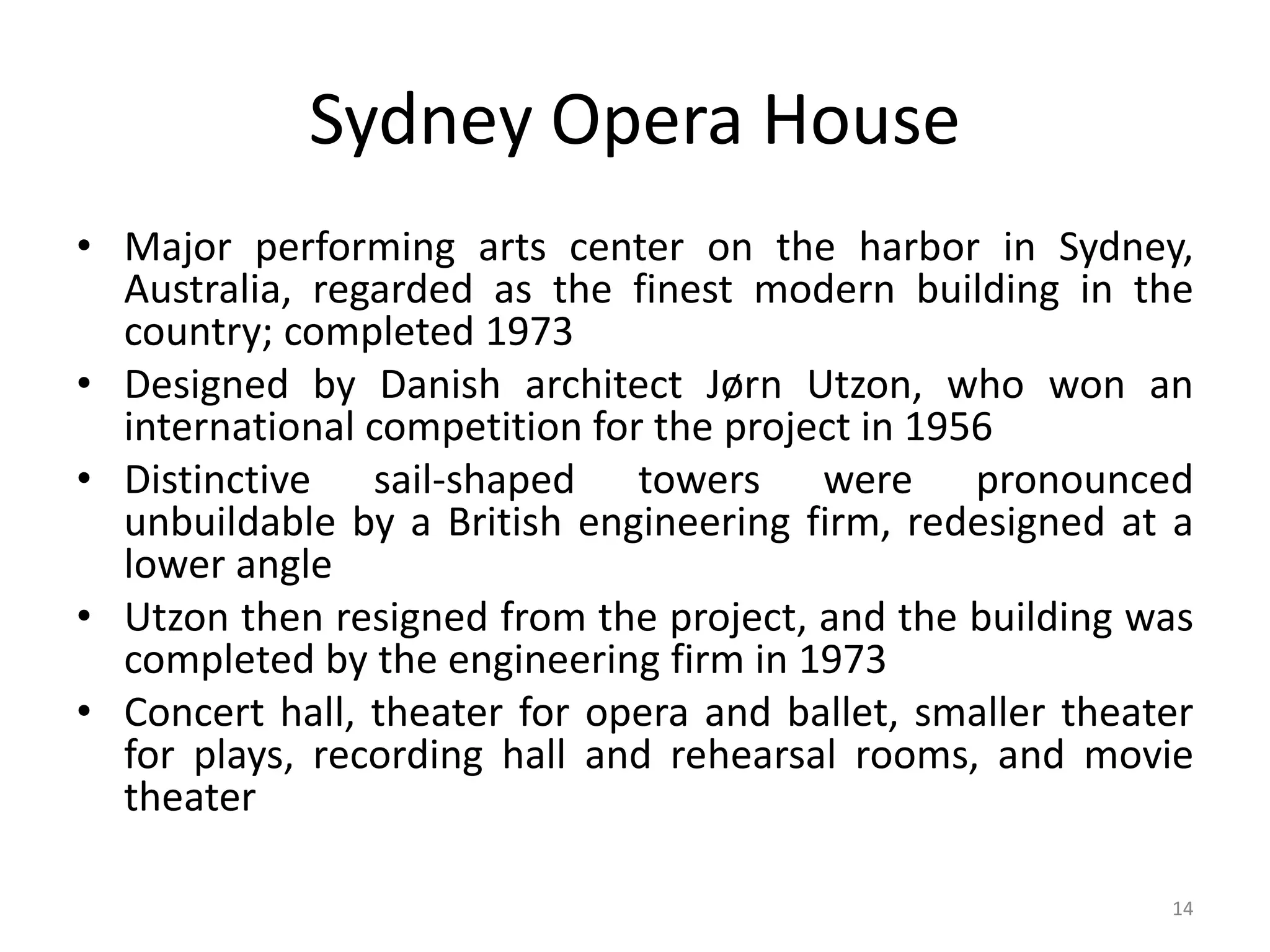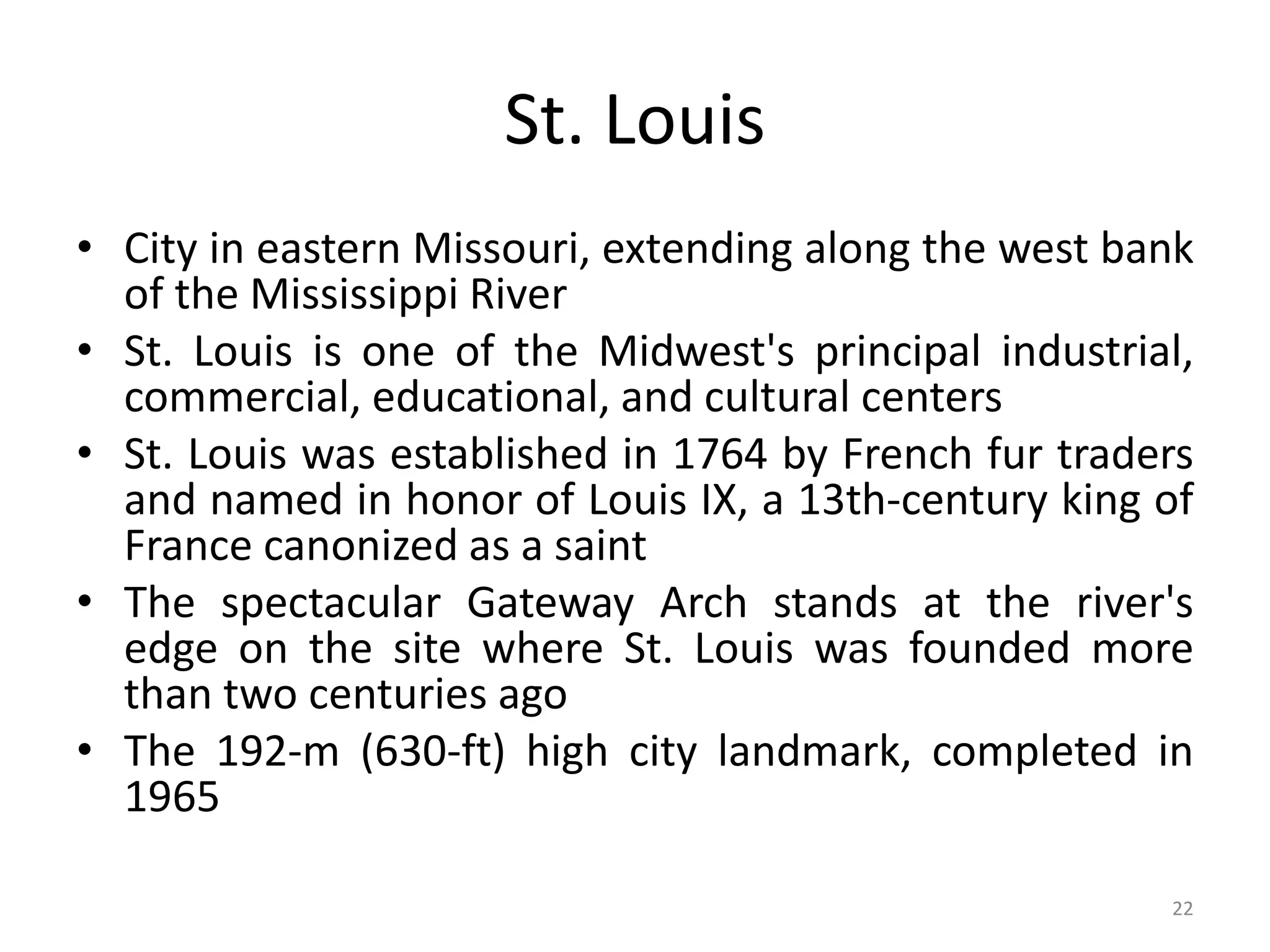This document provides an overview of modern architecture and lists the top 10 monuments from the 20th century. It discusses the key ideas and architects that influenced modern architecture like Frank Lloyd Wright and Le Corbusier. The top 10 monuments included landmarks like the Sydney Opera House, Empire State Building, Eiffel Tower, and CN Tower that pioneered new construction technologies and design approaches.



























